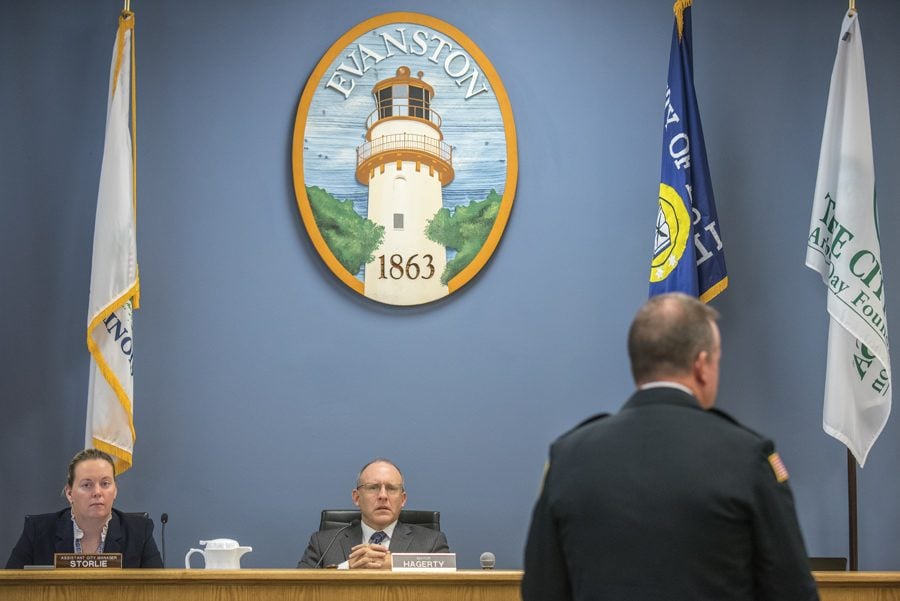Aldermen accept first streetlight modernization, standardization plan since 1979
David Lee/Daily Senior Staffer
Council Chambers in the Lorraine H. Morton Civic Center, 2100 Ridge Ave. Aldermen voted to accept the January 2019 Street Light Master Plan, and the Tallmadge streetlight proposal
February 19, 2019
At Monday’s City Council meeting, aldermen voted 7-0 to accept both the January 2019 Street Light Master Plan, which standardizes and modernizes the city’s lighting system, as well as the Tallmadge streetlight proposal request.
In alignment with Evanston’s strategic vision to create the “most livable city,” the proposed plan advises the city to “reevaluate and address current and future needs of the community” to reflect current industry standards through utilizing contemporary lighting technology and improving energy efficiency. The last streetlight plan was developed in 1979.
In addition to increasing overall energy efficiency of the city’s lighting systems to reduce greenhouse gas emissions, the plan also addresses how to meet Illuminating Engineering Society of North America recommended lighting levels, which the city does not currently follow.
Mike Kerr, the project manager of the plan’s consultant team, said the majority of Evanston residents said streets are too dark, according to a survey of 700 residents conducted by Kerr’s team. In addition to addressing this concern, Kerr said the city needs to strive for uniformity in the types of lighting it uses.
“Evanston has too many types of lights,” Kerr said. “We need to standardize.”
Lara Biggs, Evanston’s engineering and capital planning bureau chief, said the plan and Tallmadge lighting proposal will work in conjunction to create a uniform lighting system and aesthetic across the city.
Biggs said the system has 6,000 lights, making it fairly complex.
“We want to make sure we’re providing not seventeen different types of lighting, but really come up with something that’s more standardized to make it easier to maintain,” Biggs said. “We want to make sure that what we’re doing is cost-effective for the residents, while allowing them to weigh in … on what the aesthetic of the city should be.”
According to city documents, existing lighting in the city is a significant source of light pollution. Biggs said the city considered environmental sustainability, energy efficiency and dark-sky friendliness in constructing the plan.
“We don’t want to be known as a community with lots of light pollution,” Biggs said. “These are things that have a lot of quality of life impact for our residents.”
According to city documents, the Tallmadge request for proposal seeks to supply Tallmadge poles and lights. About 4,200 of the city’s 6,000 lighting units are Tallmadge streetlights, historic street lamps designed in the 1930s, according to an October 2017 assessment of city infrastructure. One of the purposes of the plan’s goals is to maintain the city’s existing historic Tallmadge lighting aesthetic wherever possible.
Although aldermen discussed replacing all Tallmadge lights to create uniform height throughout the city, Ald. Melissa Wynne (3rd) said the cost is “staggering,” and it would take decades before the city would have uniform lighting. A full replacement of the city’s power centers and lighting systems would cost $80 million, according to city documents.
“At this point, we want to move forward and get the new poles ordered because we have accidents all the time where poles are taken out,” Wynne said. “We really need to start moving forward to standardize.”
Email: [email protected]
Twitter: @cassidyw_


